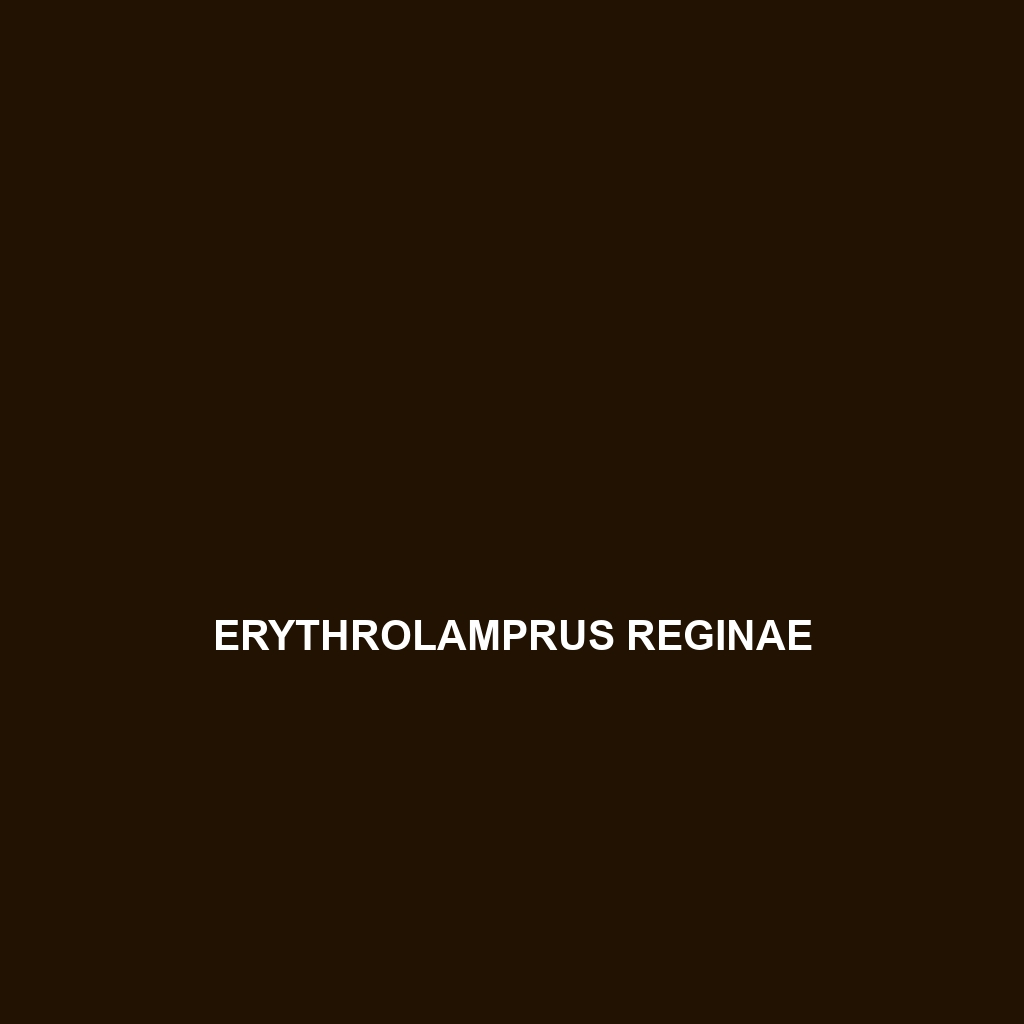-

Eryx conicus
Experience the remarkable Eryx conicus, or conical sand boa, a robust and stocky snake thriving in arid habitats, characterized by its distinctive conical head and smooth scales that range from pale yellow to light brown. This nocturnal predator plays a crucial role in its ecosystem, controlling small mammal populations while utilizing its burrowing abilities to…
-

Eryx borrii
Discover the captivating Eryx borrii, a robust snake native to arid regions of North Africa and the Middle East, renowned for its exceptional camouflage and nocturnal hunting behavior. With a diet primarily consisting of small mammals and a crucial role in maintaining ecosystem balance, this species exemplifies unique adaptations for survival in harsh desert environments.
-

Erythrolamprus williamsi
Common Name Erythrolamprus williamsi Scientific Name Erythrolamprus williamsi Habitat Erythrolamprus williamsi is primarily found in the lush environments of Central and South America, particularly within tropical rainforests and savannas. These snakes thrive in humid climate zones, where temperatures generally range between 20°C and 30°C (68°F to 86°F). They are often spotted near water sources like…
-

Erythrolamprus taeniurus
Discover the beautifully patterned Erythrolamprus taeniurus, commonly known as the striped snake, featuring vibrant stripes and a sleek body. This adaptable, nocturnal carnivore thrives in tropical rainforests, savannas, and temperate forests, playing a vital role in its ecosystem as both predator and prey.
-

Erythrolamprus pyburni
Discover the captivating Pyburn’s snake (Erythrolamprus pyburni), a resilient species thriving in the lush rainforests of Central America. With its striking coloration and agile nature, this diurnal predator plays a vital role in maintaining ecological balance by controlling small mammal and insect populations.
-

Erythrolamprus pygmaeus
The Erythrolamprus pygmaeus, or pygmy snake, is a small, slender species that thrives in humid rainforests and temperate forests of Central and South America, showcasing vibrant coloration for camouflage. As a nocturnal insectivore, it plays a crucial role in controlling insect populations while adapting to diverse environments, although it faces threats from habitat destruction.
-

Erythrolamprus pseudocorallus
Erythrolamprus pseudocorallus, commonly known as the false coral snake, features vibrant red, black, and white ring patterns and inhabits tropical regions of Central and South America. This nocturnal, non-venomous species plays a crucial role in its ecosystem as a predator of small vertebrates and exhibits remarkable mimicry to deter potential threats.
-

Erythrolamprus mertensi
Common Name Erythrolamprus mertensi Scientific Name Erythrolamprus mertensi Habitat Erythrolamprus mertensi, commonly known as Mertens’ Water Snake, is primarily found in the lush, humid environments of the rainforests and savannas of South America. Its geographic distribution extends across northeastern regions of Brazil, as well as parts of Colombia and Venezuela. This species thrives in freshwater…
-

Erythrolamprus epinephalus
Introducing the Erythrolamprus epinephalus, commonly known as the Epinephalous Snake. This vibrant, nocturnal predator thrives in humid tropical and temperate forests, exhibiting agile movements and a diet primarily consisting of small mammals, birds, and amphibians, playing a crucial role in maintaining ecological balance.
Search
Popular Posts
-
Lygosoma corpulentum
Discover the Lygosoma corpulentum, or fat skink, a robust insectivorous lizard native to Southeast Asia’s moist tropical rainforests and varying habitats. With a stocky body, impressive camouflage, and remarkable adaptability, this ovoviviparous species plays a crucial role in maintaining ecological balance.
-
Lygosoma boehmei
Lygosoma boehmei is a slender, nocturnal insectivore found in humid tropical rainforests and savannas of Southeast Asia, exhibiting a smooth, camouflaging texture and remarkable burrowing abilities. This vulnerable species plays a crucial role in its ecosystem by controlling insect populations and serving as prey for larger predators.
-
Lygosoma bampfyldei
Lygosoma bampfyldei, commonly found in tropical and subtropical regions, is a moderately sized lizard measuring 15 to 25 cm, known for its elongated body and glossy, camouflage coloration. This insectivorous species thrives in moist habitats and plays a vital role in maintaining ecological balance by controlling insect populations.
Categories
Tags
animal adaptations (924) animal behavior (5000) animal reproduction (865) behavior (920) biodiversity (7853) conservation (1670) conservation efforts (1778) conservation status (5748) diet (2104) ecological balance (2087) ecological role (1952) ecosystem (1469) ecosystem role (2901) endangered species (2514) habitat (3280) habitat conservation (1136) Habitat Destruction (1421) habitat loss (3385) herpetology (870) insectivorous reptiles (948) IUCN Red List (1971) lizard behavior (881) lizard diet (944) lizard reproduction (1101) nocturnal animals (2754) nocturnal behavior (2592) nocturnal reptiles (1061) physical characteristics (2058) predator-prey relationships (927) reproduction (2890) reptile behavior (1037) reptile conservation (1348) reptile reproduction (1069) rodent species (1325) seed dispersal (2145) Seed Disperser (979) small mammals (1168) snake behavior (952) snake diet (1061) snake reproduction (1129) tropical forests (948) Vulnerable Species (4926) wildlife (2511) wildlife conservation (5355) wildlife protection (1008)


